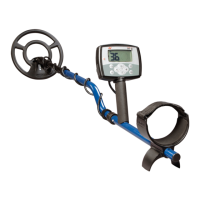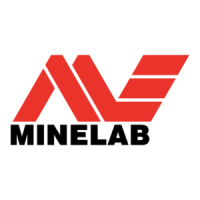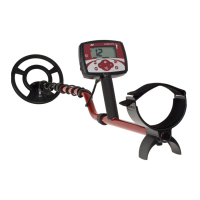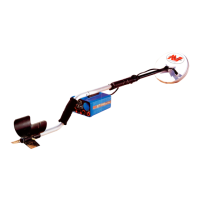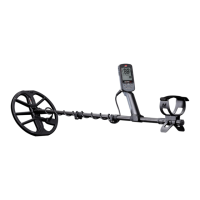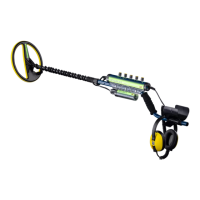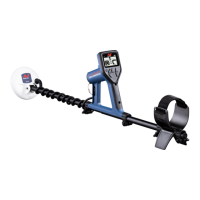20
target id
Buried metal objects are referred to as targets.
Target signals contain ferrous and conductivity
information.
As the coil is passed over a target, the detector
digitally processes the target signal and
displays this as a number. Target Identication
(ID) is used to distinguish one type of metal
target from another.
Target ID numbers range from –8 to 48.
Negative numbers represent ferrous targets
and positive numbers represent nonferrous
targets.
The last detected Target ID stays on the display
until another target is detected. If the detector
passes over a target that it rejects, the display
will show two dashes instead of a number.
Target ID Stability
The X-Terra 705 has a ne Discrimination Scale,
but this may result in some instability of the
displayed Target ID in some areas with highly
mineralised soil.
In these cases, the Target ID numbers may
be further stabilised by using the Target ID
Stabiliser. The Target Tone may not always
match the stabilised Target ID.
Activating Target ID Stability
In the detection screen, press and hold
Mode
for three seconds. The icon
will appear, indicating that Target ID Stability
is activated.
To de-activate Target ID Stability, press and
hold Mode
for three seconds. The
icon will disappear, indicating that Target ID
Stability is de-activated.
Rejected segments appear as black, accepted
segments disappear altogether (allowing
signals from metal objects). The combinations
of accepted and rejected segments are called
Discrimination Patterns.
Ferrous targets are those that contain iron (e.g.
nails). They are generally magnetic and are
represented by the left-hand side segments.
Desired and undesired targets may appear
anywhere along the discrimination scale, e.g.
Desired ferrous target - Canadian coin
Undesired ferrous target - iron nail
Desired nonferrous target - gold coin
Undesired nonferrous target - pull-tab
Discrimination segments may be turned on
or o, rejecting or accepting certain targets,
respectively (Editing Discrimination Patterns,
p. 25).
In addition to the Target ID, targets are also
represented as a particular segment on a linear
scale at the bottom of the display.
Each discrimination segment represents
a level of conductivity and ferrous content.
Nonferrous targets are those that have no
iron content, such as gold, silver, copper and
bronze. Nonferrous targets are often higher in
conductivity and are represented by the right-
hand side segments.
24 nonferrous 4 ferrous
The X-Terra 705 has 28 ID segments. The target
IDs range from –8 to 48, increasing in steps of 2.
Discrimination segment
Each segment refers to a certain type of metal signal.
Segments can be turned off (to accept targets) or
turned on (to reject targets), accepting or rejecting
signals from the corresponding metal objects.
Target ID
The numeric identifier of
a particular metal object
underneath the ground.
Many of the screen diagrams in
this manual refer to the X-Terra
705 operating in the default Coin &
Treasure Mode.
A grey icon on the diagrams in this
manual represents a ashing icon on
the detector.
Press and hold
to activate/de-
activate Target
ID Stability.
21
pattern discrimination scale
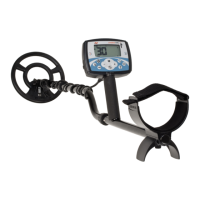
